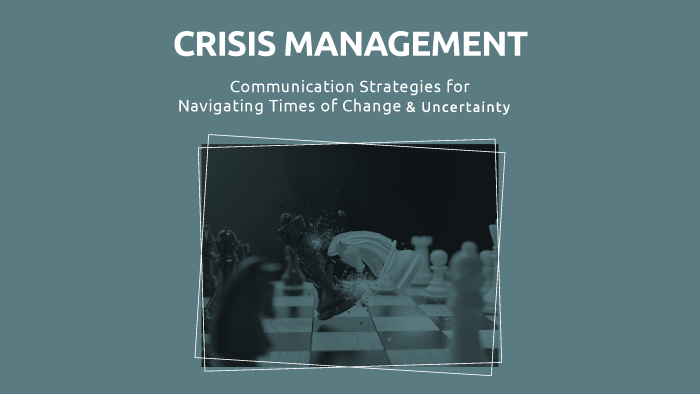
There’s no question that things are uncertain right now, and employees are likely worried about their future – just look at this data from April’s jobs report!

We don’t share these numbers to startle anyone, but to drive home a point: employees are righfully worried right now, and they need guidance, assurance, and honesty to navigate through these tough times.
This is an important moment for your organization, and how you respond and communicate could influence your public perception for years to come.
Here’s our guide to managing public expectactations, commnunicating with your staff, and bearing through these tough times.
Understand Your Expectations
Normally, your stakeholders have certain expectations: serve customers, increase productivity, grow your sales, etc. But the COVID-19 crisis has created a whole new set of expectations from customers and employees. Ipsos released a report on corporate reputation and the coronavirus.
The report uncovered an unsurprising truth: handling employment and layoffs responsibly has a strong correlation to public perception:

Job security, paid leave, and healthcare are understandably top public priorities, and protecting these things should be among your top priorities as well.
According to the Project Management Institute, during times of change and uncertainty, you should focus on three KPIs: employee engagement, customer retention, and productivity.
We have a lot of resources for maintaining or improving productivity during the pandemic, and our free articles on customer retention should help you through this, but in this specific crisis, your focus on employee engagement will determine how your organization navigates through this pandemic.
In our free ebook “Real Strategies to Improve Employee Engagement,” we analyzed a SHRM study that identified seven factors of an engaged employee. One of seven was the organization’s financial stability, and that may be the most important factor right now.
No matter what that situation looks like for your organization, it’s important for you to be transparent, honest, and work to mitigate the consequences for your laid-off employees.
Prioritize job security, and if you can’t keep your entire workforce employed during this time, help them out – write references, give your managers time to review resumes and provide feedback, and offer support as they job hunt during these uncertain times.
Develop a Communication Strategy
Your communication strategy will determine your reputation during and after the crisis. We interviewed Dr. Jaclyn Brandhorst about crisis communication on The BizLibrary Podcast, and her information and insight are valuable during this time.
Here are important things to keep in mind as you develop your crisis communication strategy:
The Four R’s of Crisis Communication
Crisis communication requires us to take context into consideration, and we can evaluate that context by acknowledging our relationship with those effected, your reputation with stakeholders who are counting on your during the crisis, the responsibility, if any, that you played in the crisis, and finally, how your reputation factors into your decision.
Identify Your Crisis
Sometimes, the fear of an impending crisis can be the actual crisis. If employees are afraid of impending layoffs, but don’t need to be, that fear can create situations and environments that are harmful, and that’s a crisis. Use this chart to evaluate your crisis:

In the context of COVID-19 layoffs, the hazard refers to the risk of layoffs, and the outrage refers to your employees’ response. Create a model for the crisis situation in your workplace.
Are layoffs not happening, but employees are panicked? That’s a low hazard, high outrage situation, and your communication should focus on reducing outrage or panic. If you are financially stable, and employees aren’t worried, you’re in a low outrage, low hazard situation, and you can take this time to reinforce company values to your stakeholders (employees and customers in this scenario).
Classifying your crisis is an important step and should inform your entire crisis management plan.
Offer as Much Support as Possible to Employees
This is a time for your organization to support employees. Employees are likely anxious, worried, and adjusting to their new normal.
Focus on mental health initiatives, lowering anxiety through servant leadership, and offering training for remote work.
For employees who are laid off, if you can, offer them access to your training – they’ll need training related to interviewing, resume building, and more – all of which can be found in The BizLibrary Collection.
These are not fun times for anyone, or for any organization. With the right communication strategy, you can navigate through this crisis. For some positive news: we’re close to the peak, and each day brings us closer to the end of this pandemic.

